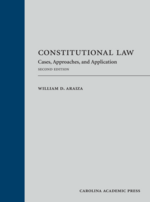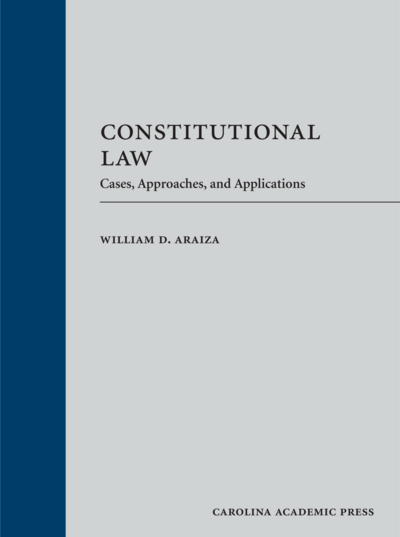This book has been replaced by a newer edition:
Constitutional Law: Cases, Approaches, and Application, Second Edition
2021, 1166 pp, casebound, ISBN 978-1-5310-2090-3
$168.00
Teacher's Manual available
Includes Core Knowledge for Lawyers online contentConstitutional Law
Cases, Approaches, and Applications
2016
Tags: Constitutional Law
Teacher's Manual available
1114 pp $145.00
ISBN 978-1-61163-729-8
eISBN 978-1-5310-0160-5
To view or download the 2020 Supplement to this book click here.
Constitutional Law: Cases, Approaches, and Applications is a succinct and careful presentation of canonical constitutional law cases and important constitutional law statements from the political branches. Additionally, its annual supplement includes material based on recent appellate cases applying Supreme Court constitutional doctrine. Its main features include:
- Relatively longer excerpts of relatively fewer cases, carefully edited to preserve citations to relevant precedent. This feature allows professors to engage students about appropriate use of precedent. The book also includes note material that connects the featured cases, thus providing the students with a comprehensive explanation of the law in a manageable number of pages.
- Thematic, as well as topical, organization, which allows professors to explore particular jurisprudential approaches. For example, much of the equal protection material is organized around the Court's use, and eventual abandonment, of suspect class analysis.
- An annual supplement that, in addition to excerpting the Supreme Court's most recent constitutional law opinions, also features appellate cases applying the Court's constitutional law doctrines, in the form of excerpts, notes, or problems. This feature helps students understand how the Court's often-vague statements of constitutional law are actually applied. It also teaches the fundamental (but often-unlearned) reality that practicing lawyers need to know not just what the Supreme Court has said about a particular issue, but how the relevant lower court jurisdiction has understood that statement. Moreover, providing these cases as problems allows students to work through the implications of a Supreme Court decision in a concrete, real-life context.



